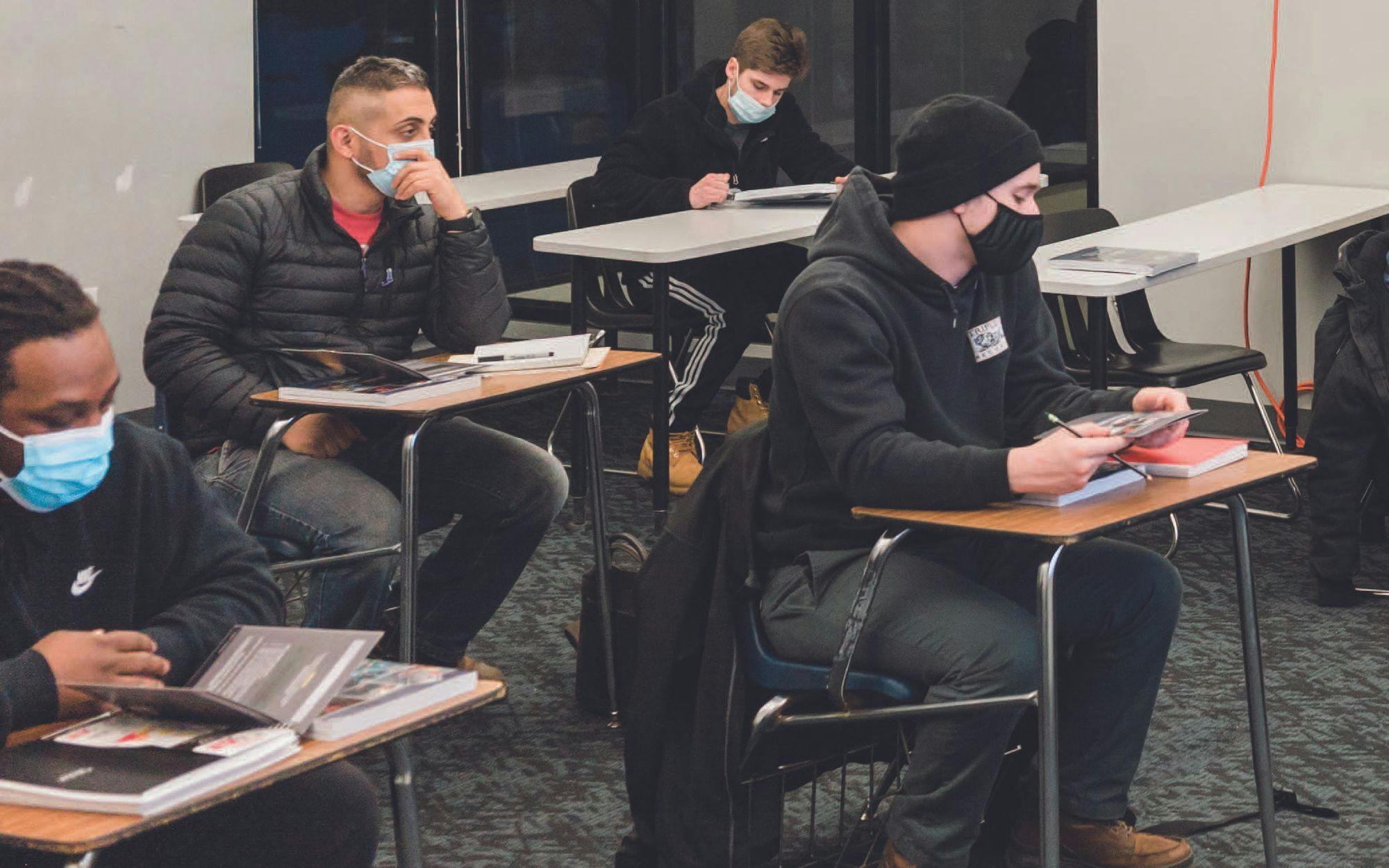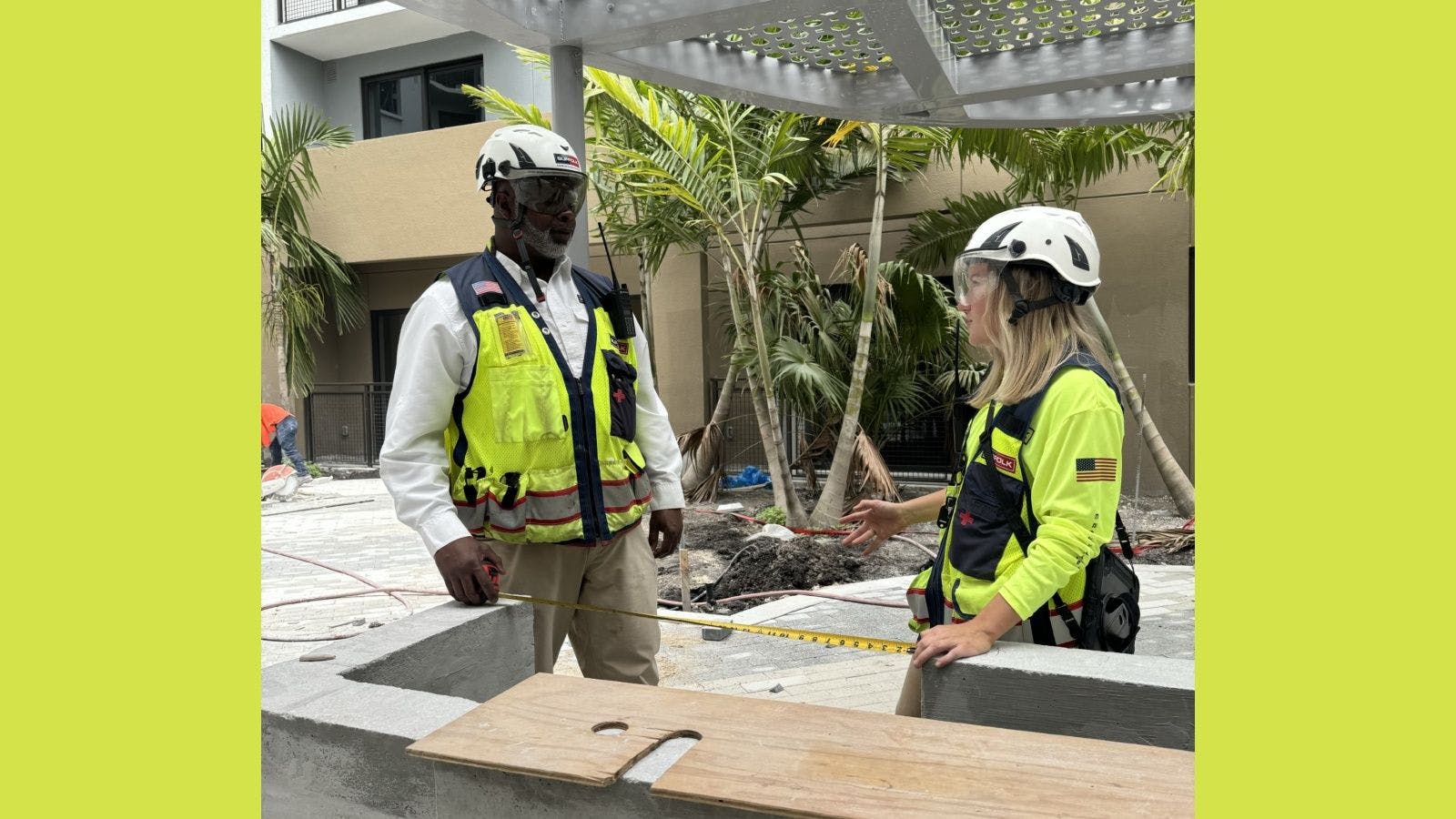
Virtual Miracle
When the COVID-19 pandemic abruptly descended upon the construction industry in the Spring of 2020, Associated Builders and Contractors’ chapters across the United States—like most everyone else—immediately went into lockdown mode, and training came to a screeching halt.
It was obvious that transitioning to an all-virtual training platform was the only way to keep things moving, but the steps for reaching that goal were anything but clear. Seeing the need, the Trimmer Construction Education Fund and ABC Apprenticeship Fund offered approximately $295,000 in grants for those requiring assistance with the unexpected financial burden.
It was a blessing in the darkness for ABC’s Illinois Chapter, headquartered outside of Chicago. Chapter President Alicia Martin, Vice President of Education & Safety Scott Loberg and Education Coordinator Jim Gain quickly mapped out a game plan and landed a grant from the Trimmer fund. They then used the money to build out a studio for virtual training, buy new laptops for instructors, transition to a new online platform and begin virtual training for their carpentry, HVAC and electrical students.
Martin was impressed by the ease of the application process and the speed with which they received the funds. “We were in the process of transitioning to online testing for NCCER,” she says, “and the pandemic gave us the push we needed to go fully remote with our education programs. We had to get it done.”
It also provided an opportunity for them to expand into historically underserved areas of Illinois. The transition has been so successful, in fact, that the Illinois chapter plans to continue with its new hybrid training model even after the pandemic is over. “That’s the real beauty of this,” Martin says. “In the past, we weren’t able to provide training to remote locations. One student is actually stationed overseas in the military, but able to continue his construction education with us.”
Theirs is a common story, of course, as most ABC chapters scrambled in the early days of COVID-19 to find ways to keep working. Kristi Stevenson, president/CEO of the Texas Mid Coast Chapter in Victoria, Texas, says the students enrolled in her chapter’s Mid Coast Construction Academy (an apprenticeship program) went on spring break in 2020 and didn’t come back. “When they were signing up for that class, we had no idea COVID-19 was coming, so we hadn’t prepared the students—or the instructors,” Stevenson says.
Much of the chapter’s Trimmer funding was used to purchase computers for both students and instructors, enhance their Zoom and Dropbox subscriptions, as well as purchase web cameras for existing laptops.
In the beginning, the transition was a bit rocky. Even after the initial lockdown, courses had to be postponed due to a serious learning curve. There are about 70 students usually enrolled in the ABC and Construction Academy programs, and their training is in high demand. “We offer a construction site safety technician course that’s always full,” Stevenson says, “and it remained that way even through the pandemic.”
Now that they’re back to in-person learning, the new computers will continue to be used for required, computer-based NCCER testing beginning in August.
ABC’s Arkansas Chapter immediately shut down its in-person training during the lockdown, then opened back up in the summer in a limited capacity. Ultimately, the chapter suffered a 20% dip in enrollment, but Chapter President Bill Roachell says the Trimmer funding it received was a true silver lining. “It opened up a new world and helped us transition to Zoom training, as well as improve the classroom experience in our 12,700-square-foot North Little Rock training space.” They also updated the existing Flashpoint learning management system.
It was critically important that the chapter stayed operational because it catered to as many as 750 students in apprenticeship and professional development training. In fact, the chapter has plans to permanently maintain its hybrid learning format for those members in rural areas or in locations far from a physical testing site. “We can have a speaker in central Arkansas, put that on Zoom and our folks in northwest Arkansas can join in,” Roachell says.
A core construction class for high school students is also now available in a virtual format. “Before the pandemic and Zoom, we wouldn’t have known how to do that,” he adds. “We actually had a kid from Oklahoma join the class.”
Joshua Reap, president & CEO of the New Hampshire/Vermont Chapter in Concord, New Hampshire, says his chapter hopes to expand its enrollment by 20% to 30% because of the new virtual reach. The chapter’s generous grant from the Trimmer Foundation gives it “more robust” educational offerings. One of the classrooms in the chapter’s 1,200-square-foot training center now resembles a professional recording studio thanks to a programmable, high-definition camera that follows the instructor, in addition to a new smart board, 83-inch flat panel television and ceiling microphones.
Some of the chapter’s specialty contractor members helped with the installation. “It’s important to have high-quality equipment when educating people,” Reap says. “We had talked about this for some time, because our students frequently have to travel two to three hours to get to the facilities. We thought it would be nice to have a recording studio lab as a classroom, and the Trimmer funds helped us move in that direction.”
It wasn’t a difficult transition. The chapter primarily offers management and leadership training, which transferred easily to a virtual environment. They were also one of the first chapters to provide virtual OSHA 10 training—and are currently broadening their reach to a K-12 audience. “These kids are all learning virtually right now anyway, so it was fairly easy for our workforce development director to hop on a Zoom call to introduce them to construction in an engaging way,” Reap says.
Jennifer Woodruff, vice president of operations at the Houston Chapter, says their funding helped them quickly convert ABC National’s “world class” safety program onto a remote learning platform. They enlisted the help of Greg Sizemore, vice president of HSE and Workforce Development, to make the transition because the course was originally designed for a physical setting.
Time was of the essence, as one of the chapter’s largest member companies, TD Industries, had an urgent need. “We immediately invested in webcams, tripods, iPads and the Zoom platform for instructional use,” Woodruff says.
ABC Houston’s training affiliate, the Construction & Maintenance Education Foundation, has also taken the virtual plunge. Michael Richter, CMEF executive director, says many of its craft programs have transitioned, at least partially, to remote learning. “Fifteen years ago, we were asking why we weren’t utilizing technology more,” Richter says. “We kicked that ball down the road for years, and the pandemic simply forced us to move on it.”
An upgraded Zoom account, along with a whiteboard and screen-sharing features, now enable CMEF instructors to teach “like they’re in the room with you, and all the resources and documentation are there, too.”
To make it easier, Richter set up an online portal whereby students and instructors can easily enter a classroom with a pre-assigned four-digit PIN. “They access it through their phone, tablet or computer,” Richter says. Once the remote learning modules are completed, students then come into the CMEF facilities for testing.
ABC’s Southeast Michigan Construction Academy in Madison Heights saw an immediate decline in its enrollment during the pandemic. The Detroit area was hit “particularly hard” and students were still nervous about coming back in the fall. Ultimately, the Southeast Michigan Chapter’s Trimmer funds became a vital piece of its overall digital strategy, says chapter President and CEO Keith Ledbetter.
The chapter purchased 100 new computers with the grant money in order to transition to online testing. They also invested more than $100,000 of their own money for audio-visual systems across eight classrooms, Ledbetter says. That included projection screens, projectors, cameras and ceiling microphones. It eventually became a significant construction project, but allowed the chapter to cut classroom sizes in half by “Zooming” half of the students remotely while the rest attended in person, thereby alternating online and in-person instruction for each student.
While they’d discussed transitioning to virtual learning in the past, the pandemic gave them the motivation they needed. The chapter represents a small geographic area that is high in population density. “We had to have a plan in place by the time school started in August,” Ledbetter says. “Frankly, I was nervous about it; we were spending $100,000 when we weren’t even sure people were going to show up. Nevertheless, it was the only way for us to survive, and it turned out to be a godsend.”
Looking ahead, the Southeast Michigan Chapter will likely make additional investments in technology as it continues to struggle with classroom space. The 35-year-old school has one of the largest electrical apprenticeship programs in the country and has grown from 186 students to more than 500 students in just five years.
As a result, it is dealing with the physical challenges that often accompany growth. “This will be an ongoing struggle for us,” Ledbetter says. “We’re actually talking about buying additional classroom space in a different region to cover the burgeoning demand, as well as providing educational opportunities to more underserved areas. The hybrid learning model gives us the flexibility we need.”
Sam Barnes worked more than two decades as a McGraw-Hill Cos. regional editor and Engineering News-Record regional correspondent. He currently provides freelance writing and photography for a variety of businesses and publications. He earned his MBA at Louisiana State University in 2001 and a bachelor's degree in journalism at University of Louisiana Monroe in 1986.
Related stories








